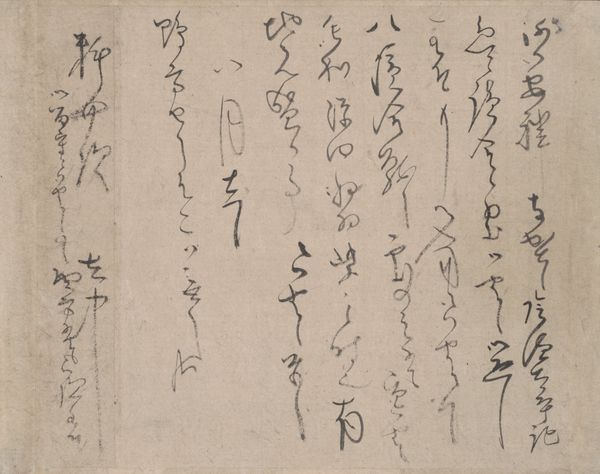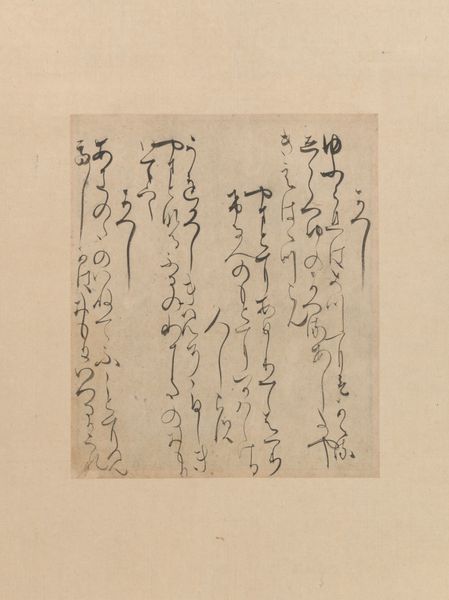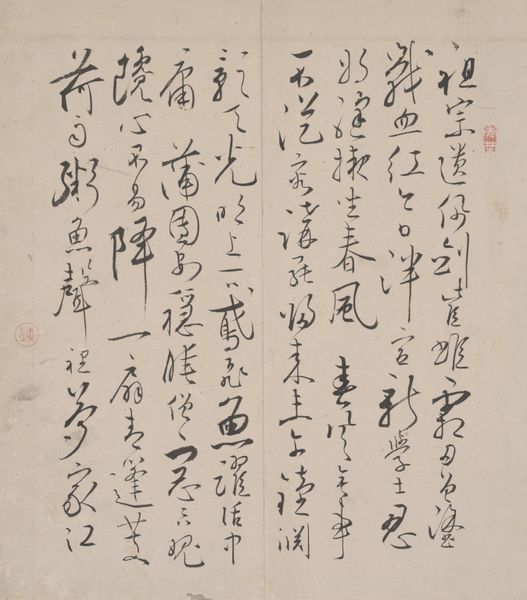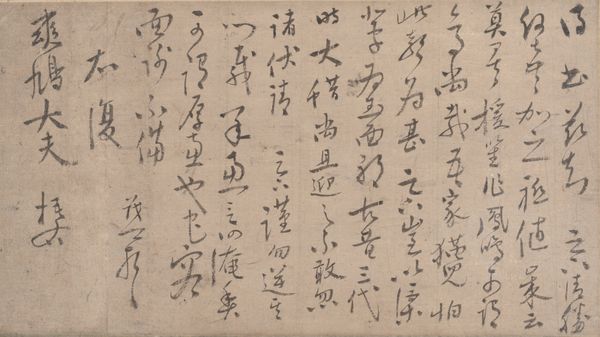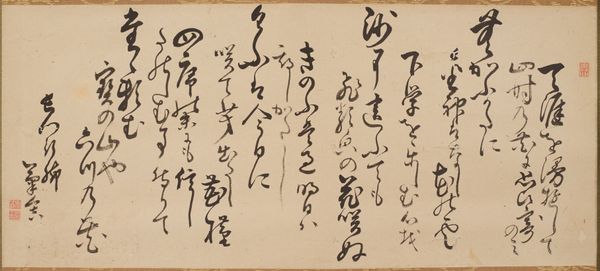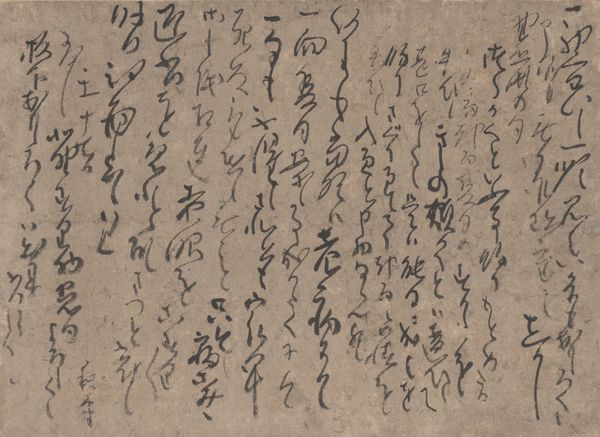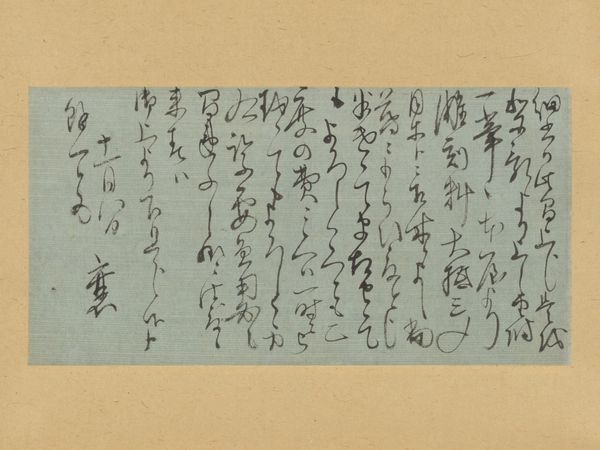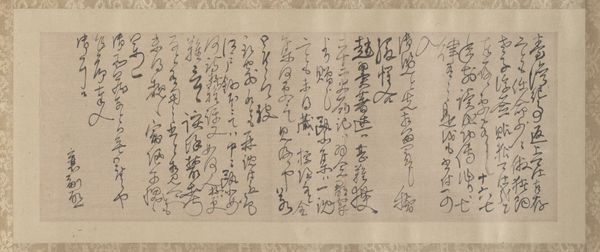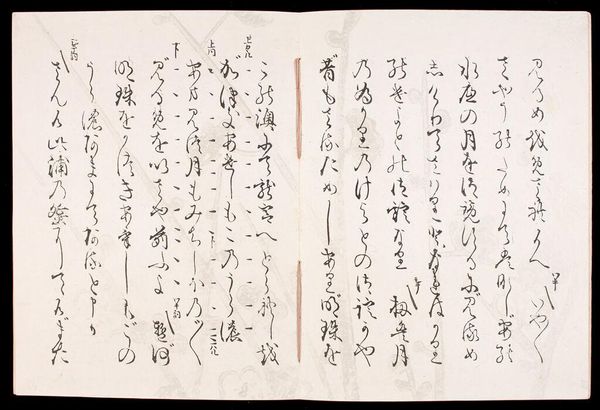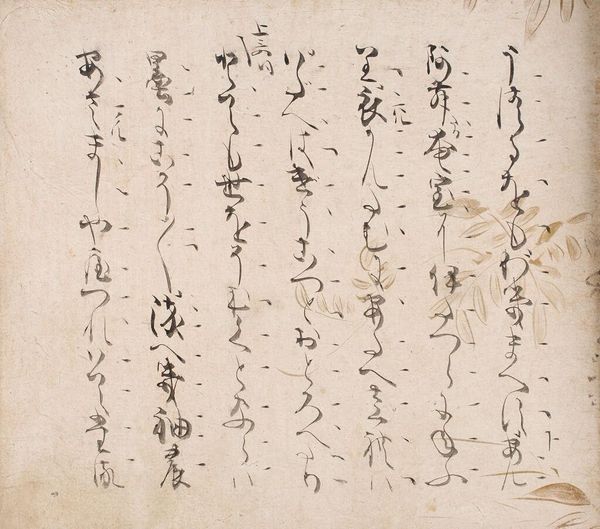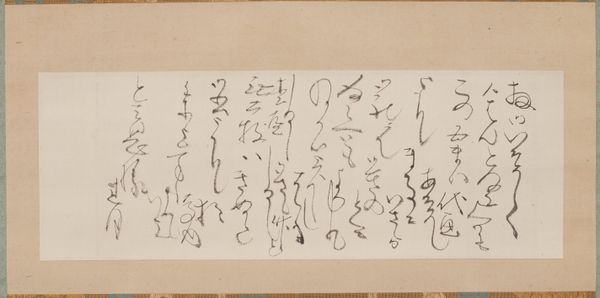
drawing, paper, ink
#
drawing
#
asian-art
#
paper
#
ink
#
line
#
calligraphy
Dimensions: 6 3/8 × 6 5/8 in. (16.19 × 16.83 cm) (sheet, letter)7 3/4 × 8 5/8 × 1/16 in. (19.69 × 21.91 × 0.16 cm) (mount)
Copyright: Public Domain
Curator: We’re standing before "Letter to Daiki" created in the early 19th century by Tanomura Chikuden, now residing here at the Minneapolis Institute of Art. It’s an ink drawing on paper, a testament to the power of line and the elegance of calligraphy. Editor: It strikes me immediately as intensely personal. There's a vulnerability to handwritten correspondence, especially one that’s seemingly untouched by time, almost as if eavesdropping. Curator: Absolutely. Chikuden was a renowned Nanga painter and calligrapher. What’s remarkable here is how a simple letter transcends its utilitarian purpose. Calligraphy in this context functions beyond mere communication; it is elevated into an art form deeply intertwined with the social status of scholarly circles. Editor: Looking at it through a contemporary lens, I see the letter not just as communication, but also a form of self-expression, identity and class. The deliberate strokes, the ink bleed, everything indicates a specific sensibility which gives way to the elitism that accompanied literacy in the era it was produced. Curator: Precisely. The "literati," to which Chikuden belonged, placed immense value on the cultivation of self through art, poetry, and calligraphy. The act of writing itself was as crucial as the content. We also ought not underestimate the importance of artistic coteries which are fundamental for understanding patronage structures. Editor: It feels that access to education during that time wasn't just about knowing; it was also an aesthetic training that had social repercussions for one's identity, making pieces like this a window into structures of cultural power. I wonder about the dynamics within Daiki and Chikuden’s relationship. Curator: The personal connection enriches the cultural landscape within which this letter was produced. What resonates is its intimate yet revealing portrait into literati culture and practices. Editor: This piece, despite its apparent simplicity, offers layers upon layers for critical thought about ways culture impacts identity. Curator: I concur; artworks, particularly these personal effects, invite dialogue through time and history.
Comments
No comments
Be the first to comment and join the conversation on the ultimate creative platform.
